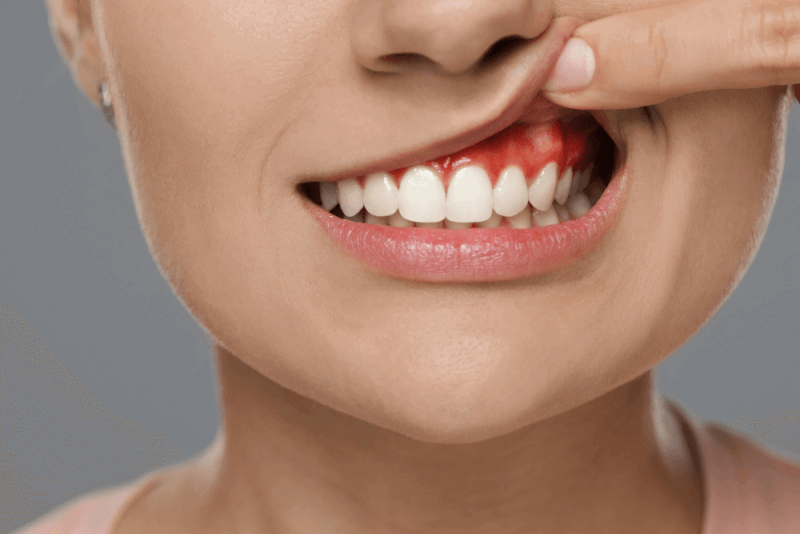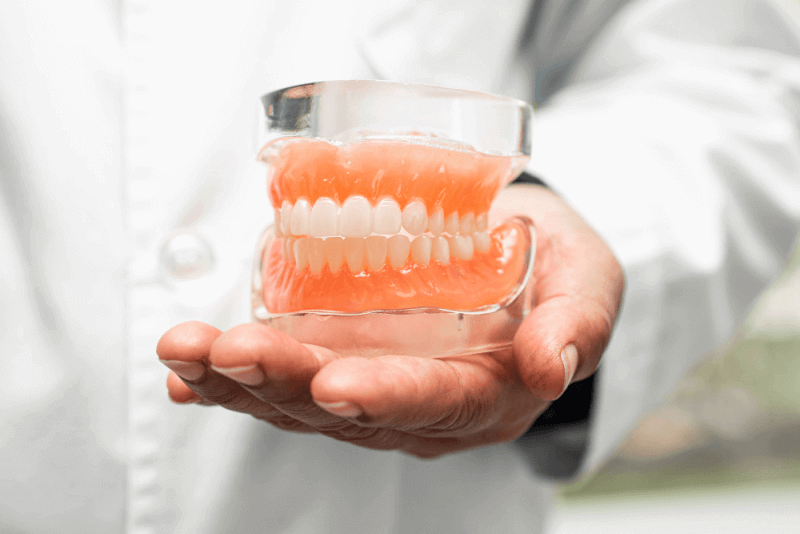What is a Dental Abscess?
A dental abscess is a pocket of pus caused by a bacterial infection that can occur in different areas close to the tooth. If the abscess forms at the tip of the tooth root, it is called a periapical abscess. If the abscess forms in the gums near the tooth root, it is called a periodontal abscess.
A periapical abscess usually results from untreated tooth decay, tooth injuries, or previous dental treatments. The resulting infection causes swelling and irritation, leading to abscess formation at the root tip.
Diagnosis Criteria for Dental Abscess
During the diagnosis of a dental abscess, dentists examine the tooth and the surrounding area. They can identify which tooth root has the abscess by touching the teeth, as abscessed teeth are usually sensitive to touch and pressure.
Additionally, an X-ray of the aching tooth can help detect the abscess. X-rays can also determine whether the infection has spread and if there are abscesses in other areas.
If the infection has spread to the neck area, a CT scan is recommended to see how far the infection has spread and its severity.
Symptoms of Dental Abscess
The symptoms caused by a dental abscess include:
- Severe, constant throbbing toothache that can radiate to the jawbone, neck, or ear
- Pain and sensitivity to hot or cold
- Pain and sensitivity from chewing or biting pressure
- Fever
- Swelling in the face, cheek, or neck that may cause difficulty swallowing
- Swollen lymph nodes under the jaw or in the neck
- Bad breath
- Sudden rush of foul-smelling and foul-tasting, salty fluid in the mouth and pain relief if the abscess ruptures
Causes of Dental Abscess
A dental abscess occurs when bacteria invade the dental pulp. The pulp is the innermost part of the tooth containing blood vessels, nerves, and connective tissue. Bacteria can enter this area through a crack in the tooth or a cavity and spread to the root.
Factors that increase the risk of developing a dental abscess include:
- Poor oral hygiene
- A diet high in sugar
- Dry mouth
Treatment of Dental Abscess
The goal of dental abscess treatment is to eliminate the infection. Methods that can be applied include:
Draining the Abscess
Dentists make a small incision in the abscess to allow the pus to drain out. The area is then rinsed with salt water. In some cases, the swelling subsides immediately, while in others, a small rubber drain is placed to facilitate drainage.
Root Canal Treatment
Root canal treatment is applied to eliminate the infection and help save the tooth. In this treatment, the dentist drills into the tooth, removes the diseased central tissue, and drains the abscess. The dentist then fills and seals the pulp chamber and root canals. A crown may be placed on the tooth, especially if the abscess is in a back tooth, to make it stronger.
Tooth Extraction
If the affected tooth cannot be saved, it must be extracted to eliminate the infection, and then the abscess is drained.
Antibiotics
Antibiotics are not prescribed if the infection is confined to the abscessed area. However, if the infection has spread to nearby teeth, the jaw, or other areas, antibiotics are prescribed to prevent further spread of the infection. Antibiotics may also be prescribed for people with weakened immune systems, even if the infection has not spread.
Rupture of a Dental Abscess
If a dental abscess ruptures, a sudden rush of foul-tasting and foul-smelling, salty fluid will fill the mouth, followed by a decrease in pain. However, the rupture of the abscess can lead to serious and dangerous consequences. If the infection spreads, bone infections and cellulitis can occur. If left untreated, it can cause complete deformation of the jawbone.
Deformation of the jawbone can lead to tooth loss and damage to softer facial bones, potentially altering the shape of the face. Additionally, cellulitis can occur if the abscess ruptures. If the infection spreads through the body, systemic issues can arise, posing a high risk for blood infections, respiratory issues, and heart disease.
Rupture of the abscess causing inflammation of the tissues at the base of the mouth can lead to Ludwig's angina, a serious cellulitis condition that can cause sudden airway obstruction. Though rare, it can also cause meningitis, brain abscess, and pneumonia. The rupture of the abscess can lead to severe complications, including death.
What to Do If a Dental Abscess Ruptures?
If a dental abscess ruptures, it is crucial to see a dentist as soon as possible. Emergency dental care can prevent the abscess from causing additional infections and ensure proper healing.







